
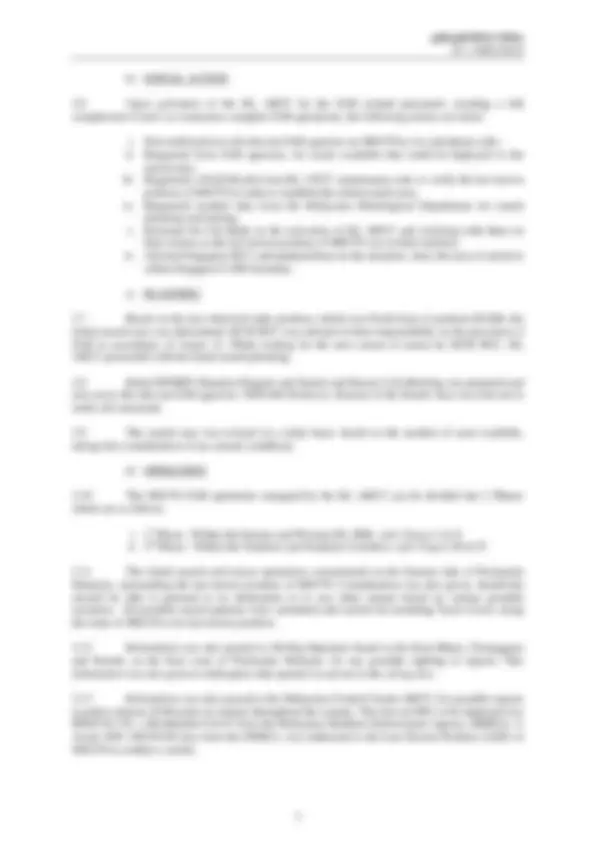
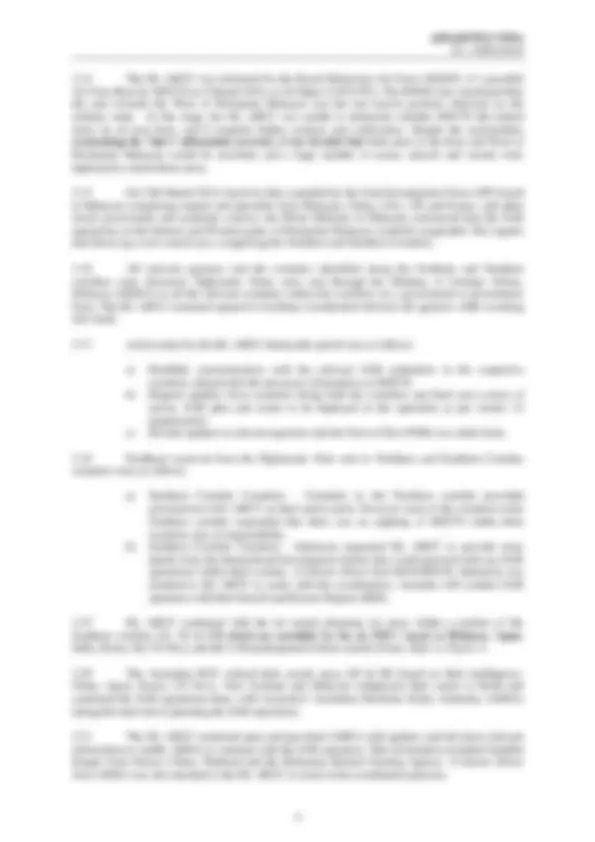
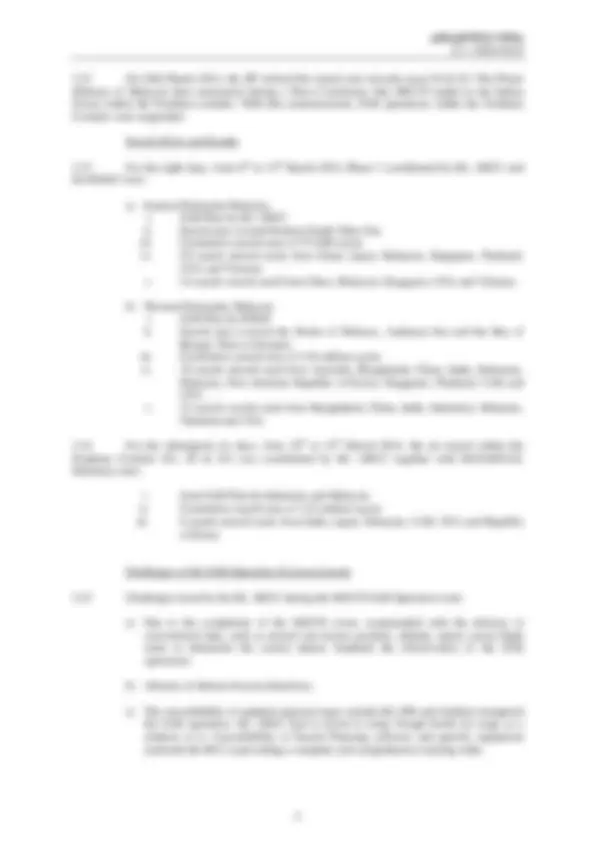
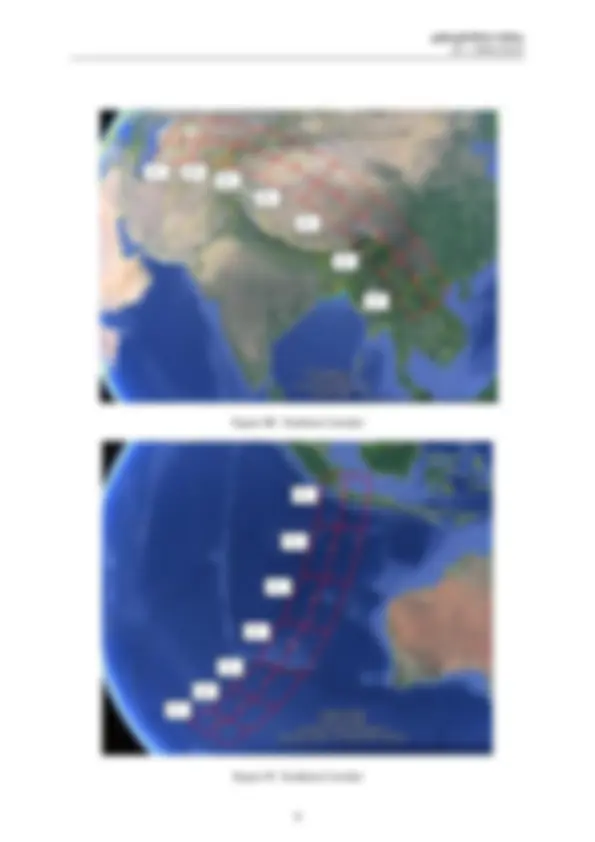
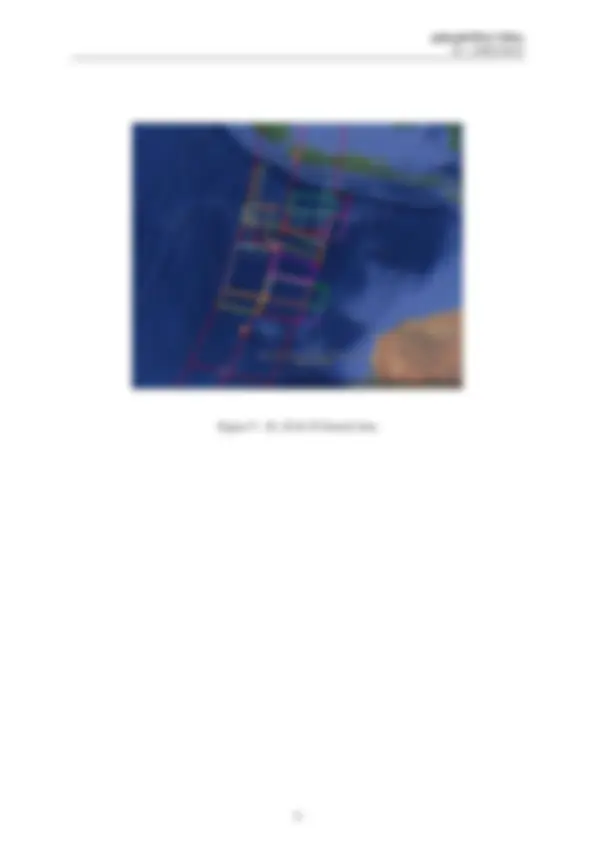


Study with the several resources on Docsity

Earn points by helping other students or get them with a premium plan


Prepare for your exams
Study with the several resources on Docsity

Earn points to download
Earn points by helping other students or get them with a premium plan
Community
Ask the community for help and clear up your study doubts
Discover the best universities in your country according to Docsity users
Free resources
Download our free guides on studying techniques, anxiety management strategies, and thesis advice from Docsity tutors
An overview of Malaysia's response to the search and rescue (SAR) operations for Malaysia Airlines Flight MH370, which disappeared on March 8, 2014. The document details the chain of events leading to the activation of the Kuala Lumpur Aeronautical Rescue Coordination Centre (KL ARCC), the initial actions taken, and the planning and coordination efforts. The document also highlights the challenges faced during the SAR operations and the lessons learned.
What you will learn
Typology: Study notes
1 / 9

This page cannot be seen from the preview
Don't miss anything!






International Civil Aviation Organization Third Meeting of the Asia/Pacific Regional Search and Rescue Task Force (APSAR/TF/3)
Maldives, 25 – 29 January 2015
Agenda Item 4: Asia/Pacific and inter-regional SAR planning, coordination and cooperation
(Presented by Malaysia)
This paper presents an overview of the chain of events of the Kuala Lumpur Aeronautical Rescue Coordination Centre in response to the SAR operations for Malaysia Airlines Flight MH
1.1 On 8th March 2014, MH370 a Boeing 777-200, aircraft registration 9M-MRO departed from KLIA at 00:41am Local Time (LT) 1641 UTC en-route from Kuala Lumpur, Malaysia to Beijing, China with 239 persons-on-board. At time 01.19 am LT (1719 UTC), MH370 was transferred by Kuala Lumpur Air Traffic Control Centre (KL ATCC) to Ho Chi Minh Air Traffic Control Centre (HCM ATCC) at the transfer point IGARI (85 nautical miles North East of position ‘VKB’) in accordance with normal Air Traffic Control procedures. The pilot acknowledged the transmission. This was the last contact with KL ATCC.
1.2 At approximately 5 nautical miles East of IGARI, the radar label started to ‘coast’ i.e. began to fade and eventually dropped from the KL ATCC radar screen. Based on queries from HCM ATCC, subsequent attempts to establish communication with MH370 were futile and failure to obtain a position report from various sources resulted in the Kuala Lumpur Aeronautical Rescue Coordination Centre (KL ARCC) being activated at 05.30am LT (2130 UTC).
MH370 Information
2.1 Significant information (all times in UTC)
AIRCRAFT IN DISTRESS MAS 370 / B772 / 9MMRO / Black Box (37.5Khz) HEX ID Fix CDA439E7AA35CD Portable CDA439E7AA35DD NATURE OF EMERGENCY Aircraft Missing PILOT’S INTENTION Not Reported LAST REPORTED POSITION Estimate for position IGARI given to HCM ATCC
Transfer of Communication to HCM 1719 UTC Actual time of crossing position IGARI 1720 UTC
Target Coasting (5 NM East of IGARI)
Target dropped from KL ATCC radar 1722UTC
No radio notification of flight problem from the crew No radio communication from crew after 1719 No ELT transmissions received Note: LKP – Last Known Position
SAR Action by KL ARCC
2.2 KL ARCC action was based on International Aeronautical and Maritime Search and Rescue Manual which are divided into 5 stages:
a) AWARENESS
2.3 Action taken until this stage was carried out by the Watch Manager, KL ATCC based on the standard operating procedures, which are:
01:38 am HCM ATCC enquired about MH 370, informed KL ATCC that radar target last seen at BITOD. [a waypoint after IGARI inside HCM FIR]. KL ATCC proceeded with communication check without any success. 02:15 am Queried Malaysia Airlines (MAS) and was informed that based on MAS flight tracker, the aircraft was in Cambodian airspace. This information was relayed to HCM ATCC. HCM ATCC advised that still no communication with MH370. 02:19 am KL ATCC queried if HCM ATCC was taking Radio Failure action 03:30 am MAS informed that the flight tracker was not an accurate tracking tool but based on flight trajectory projection. 03:30 am
Further coordination efforts were made to locate aircraft with Ho Chi Minh and Singapore ATCCs with no success.
2.4 The KL ARCC was activated at 5:30 am (2130 UTC) by Air Traffic Controllers who are SAR trained and rostered in every shift.
2.5 Delay in the activation of the KL ARCC was partially contributed to conflicting reports received from Malaysia Airlines, that the aircraft was still flying based on their flight tracking system and reports on the media indicating that MH370 had landed safely in Nanning airport in China. Upon further queries and investigation, these reports were found to be baseless and inaccurate. Precious time was wasted pursuing these unfounded reports.
2.14 The KL ARCC was informed by the Royal Malaysian Air Force (RMAF) of a possible Air Turn Back by MH370 on 8 March 2014, at 10:30pm (1430 UTC). The RMAF also mentioned that the area towards the West of Peninsular Malaysia was the last known position observed on the military radar. At this stage, the KL ARCC was unable to determine whether MH370 did indeed make an air turn back, and it required further analysis and verification. Despite the uncertainties surrounding the ‘latest’ information received, it was decided that both areas to the East and West of Peninsular Malaysia would be searched, and a large number of assets, aircraft and vessels were deployed to search these areas.
2.15 On 15th March 2014, based on data compiled by the Joint Investigation Team (JIT) based in Malaysia comprising experts and specialist from Malaysia, China, USA, UK and France, and other senior government and academic sources, the Prime Minister of Malaysia announced that the SAR operations on the Eastern and Western parts of Peninsular Malaysia would be suspended. The experts had drawn up a new search area, comprising the Northern and Southern Corridors.
2.16 All relevant agencies and the countries identified along the Northern and Southern corridors were informed. Diplomatic Notes were sent through the Ministry of Foreign Affairs, Malaysia (MOFA) to all the relevant countries within the corridors on a government to government basis. The KL ARCC remained opened to facilitate coordination between all agencies while awaiting new leads.
2.17 Action taken by the KL ARCC during this period was as follows:
a) Establish communication with the relevant SAR authorities in the respective countries and provide the necessary information on MH370. b) Request updates from countries along both the corridors and their next course of action, SAR plan and assets to be deployed in the operation as per Annex 12 requirements. c) Provide updates to relevant agencies and the Next of Kin (NOK) on a daily basis.
2.18 Feedback received from the Diplomatic Note sent to Northern and Southern Corridor countries were as follows:
a) Northern Corridor Countries - Countries in the Northern corridor provided information to KL ARCC on their action taken. However most of the countries in the Northern corridor responded that there was no sighting of MH370 within their countries area of responsibility. b) Southern Corridor Countries - Indonesia requested KL ARCC to provide more details from the International Investigators before they could proceed with any SAR operations within their country. A liaison officer from BASARNAS, Indonesia was attached to KL ARCC to assist with the coordination. Australia will conduct SAR operation with their Search and Rescue Region (SRR).
2.19 KL ARCC continued with the air search planning for areas within a portion of the Southern corridor (S1, S2 & S3) which are reachable by the air SRU’s based in Malaysia. Japan, India, Korea, the US Navy and the UAE participated in these search efforts. Refer to Figure V.
2.20 The Australian RCC refined their search areas (S5 & S6) based on their intelligence. China, Japan, Korea, US Navy, New Zealand and Malaysia redeployed their assets to Perth and continued the SAR operations there, with Australia’s Australian Maritime Safety Authority (AMSA) taking the lead role in planning the SAR operations.
2.21 The KL ARCC remained open and provided AMSA with updates and the latest relevant information to enable AMSA to continue with the SAR operation. This information included Satellite Images from France, China, Thailand and the Malaysian Remote Sensing Agency. A liaison officer from AMSA was also attached to the KL ARCC to assist in the coordination process.
2.22 On 24th March 2014, the JIT refined the search area towards areas S4 & S5. The Prime Minister of Malaysia then announced during a Press Conference that MH370 ended in the Indian Ocean within the Southern corridor. With this announcement, SAR operations within the Northern Corridor were suspended.
Search Effort and Results
2.23 For the eight days, from 8th^ to 15th^ March 2014, Phase 1 coordinated by KL ARCC and the RMAF were:
a) Eastern Peninsular Malaysia i. SAR Plan by KL ARCC ii. Search area covered Eastern South China Sea iii. Cumulative search area of 573,000 sq km iv. 28 search aircraft used, from China, Japan, Malaysia, Singapore, Thailand, USA and Vietnam. v. 34 search vessels used from China, Malaysia, Singapore, USA and Vietnam.
b) Western Peninsular Malaysia i. SAR Plan by RMAF ii. Search area covered the Straits of Malacca, Andaman Sea and the Bay of Bengal, West of Sumatra iii. Cumulative search area of 4.56 million sq km iv. 36 search aircraft used from Australia, Bangladesh, China, India, Indonesia, Malaysia, New Zealand, Republic of Korea, Singapore, Thailand, UAE and USA. v. 35 search vessels used from Bangladesh, China, India, Indonesia, Malaysia, Thailand and USA.
2.24 For the subsequent six days, from 18th^ to 23rd^ March 2014, the air search within the Southern Corridor (S1, S2 & S3) was coordinated by KL ARCC together with BASARNAS, Indonesia were:
i. Joint SAR Plan by Indonesia and Malaysia ii. Cumulative search area of 1.63 million sq km iii. 8 search aircraft used, from India, Japan, Malaysia, UAE, USA and Republic of Korea
Challenges of the SAR Operation & Lesson Learnt
2.25 Challenges faced by the KL ARCC during the MH370 SAR Operation were:
a) Due to the complexity of the MH370 event, compounded with the absence of conventional data, such as aircraft last known position, altitude, speed, actual flight route to determine the correct datum, hindered the effectiveness of the SAR operations.
b) Absence of distress beacon detections.
c) The unavailability of updated regional maps outside KL FIR and facilities hampered the SAR operation. KL ARCC had to resort to using Google Earth for maps as a solution to it. Unavailability of Search Planning software and specific equipment restricted the RCC in providing a complete and comprehensive tasking order.
Attachment I
Figure 1: Eastern Search Area
Figure II : Western Search Area
Figure III : Northern Corridor
Figure IV: Southern Corridor